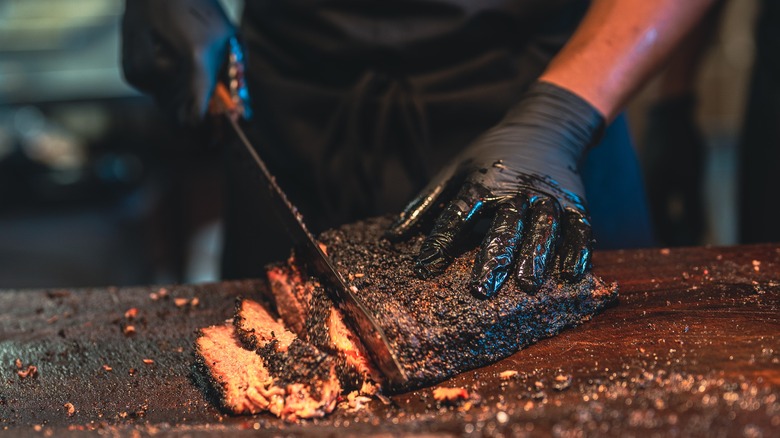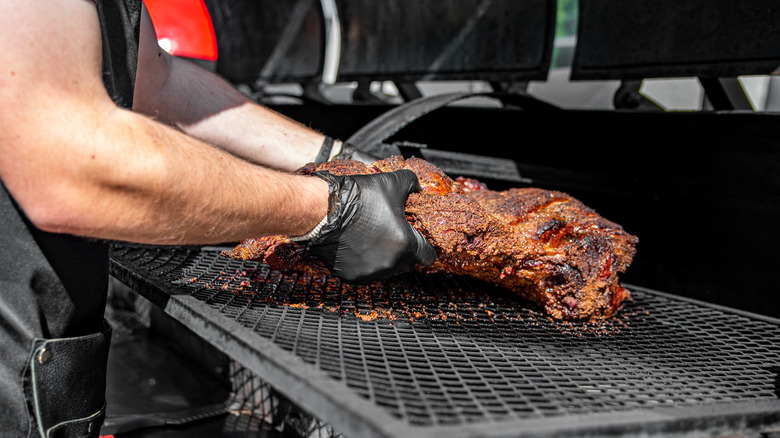The Temperature At Which You Should Wrap Brisket
Brisket is one of the most deliciously difficult cuts of beef a grill or pit master can take on, but just because it's difficult doesn't mean you can't keep improving. An important step in taking your brisket to the next level is learning the best way to wrap brisket for a crispy bark. To find out what temperature the brisket needs to be at before you start wrapping it, we reached out to Robbie Shoults, Celebrity Chef, third-generation Owner of Bear Creek Smokehouse, Owner of Marshall Mercantile and High Horse, and Founder of Bear Rubz Grillin' Spices.
Pitmasters and home cooks alike will wrap brisket in either aluminum foil or butcher paper after the brisket has had a chance to soak up all of the great smoky flavors and form a delicious bark. Instead of using a timer or simply eyeballing it, professionals will use a thermometer to know when it's time to wrap the meat. "We wrap briskets after we get a good exterior bark all the way around," Shoults told Tasting Table. "Usually around 170 degrees." That's a pretty standard temperature, though some pitmasters will go as low as 165 degrees Fahrenheit. There are plenty of details you need to know to get brisket to turn out right. But if you take each of them a step at a time, you'll be whipping up competition-ready slabs of delectably tender brisket before you know it.
Why do pitmasters wrap brisket?
The reason you want to wrap your brisket once it reaches an internal temperature of 170 degrees Fahrenheit is to avoid what's known as brisket stall. Even if you keep the temperature of the grill or smoker at a steady 225 degrees Fahrenheit, the brisket will reach a point where the temperature simply doesn't want to climb any higher and it stalls out. By wrapping the brisket, you can trap the heat inside and push the brisket up to the desired goal (usually 200 degrees Fahrenheit) without letting the meat sit there and dry out. This method of wrapping the brisket is known as the Texas crutch.
But while wrapping up the meat at the right temperature can significantly increase the quality of your brisket, you don't want to wrap it too soon. "If you wrap too soon, the bark will not have a chance to form," Shoults explained. Cooking brisket is a fully hands-on endeavor, and Shoults had some tips on how to get the bark to form as well. "In an effort to get the best, most even bark all the way around, we flip, spin, and rotate our briskets throughout the smoking process." Brisket is a dense piece of beef, so don't be shy about shoving it around. Timing, temperature control, and practice will all help you take your dry brick of brisket and turn it into a mouthwatering beauty you'll feel proud to share with friends and family.

